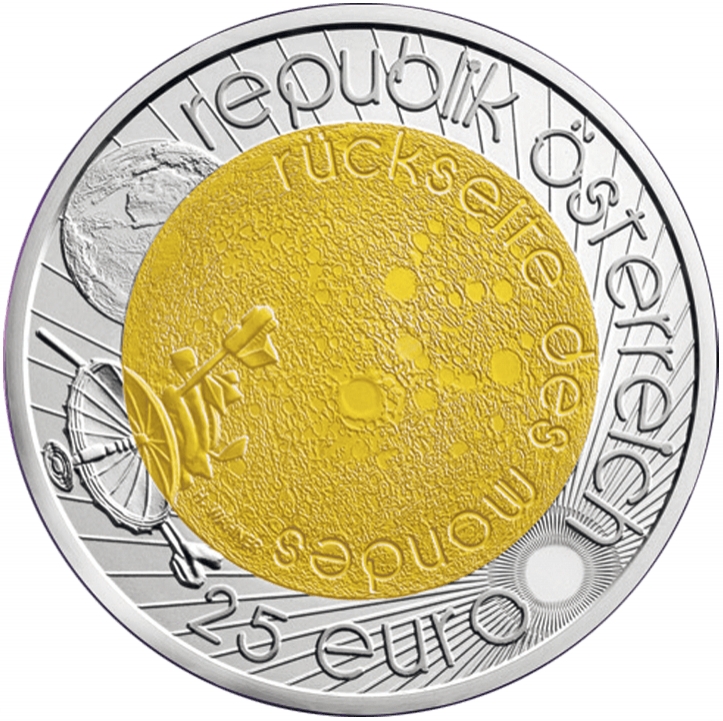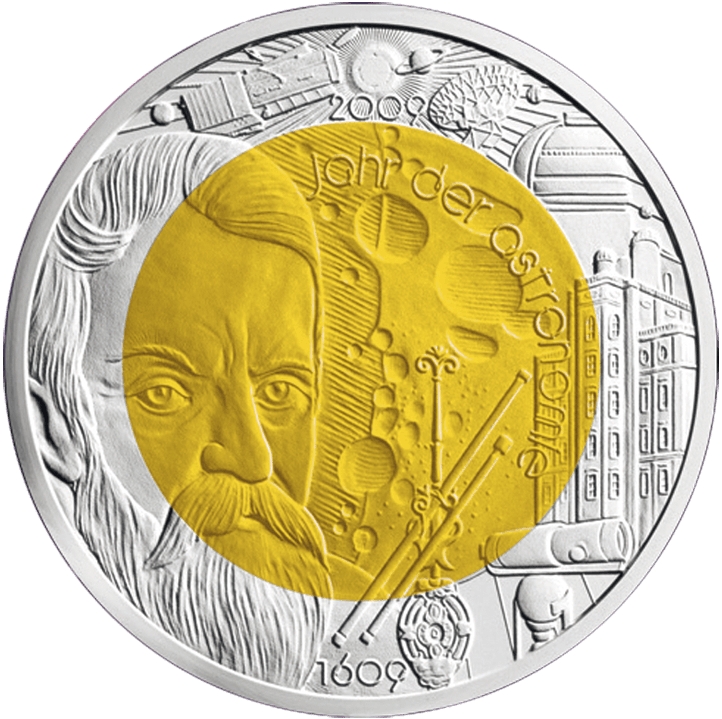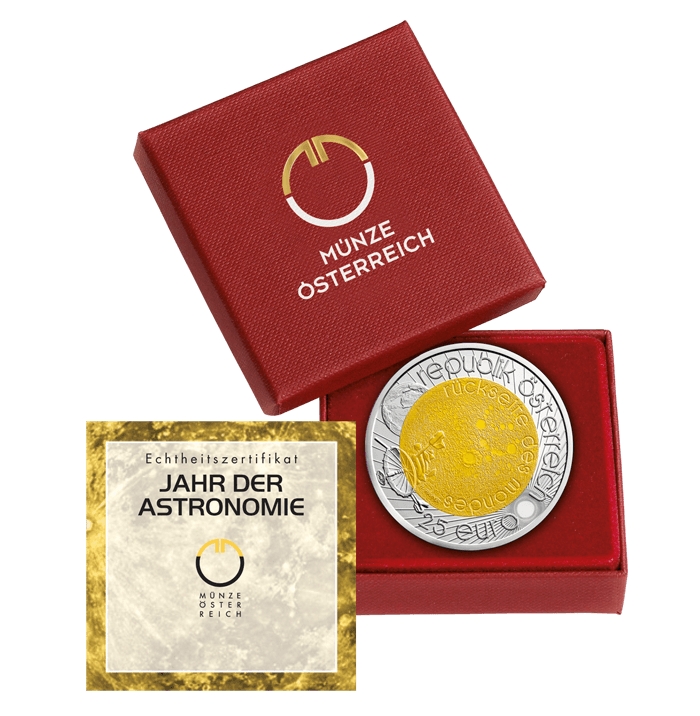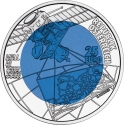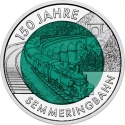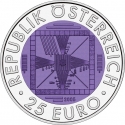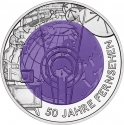You are about to finish your registration. Please check your mailbox (including spam folder). There should be a letter with a confirmation link. Check setting to make sure that your e-mail address is correct.
Send letter againDescription
The International Year of Astronomy was a year-long celebration of astronomy in 2009 that coincided with the 400th anniversary of the first recorded astronomical observations made by Galileo Galilei (1564–1642) with a telescope and the publication of Johannes Kepler's (1571–1630) Astronomia nova. Partaking in the celebrations, the Austrian Mint made astronomy the subject of that year's 25 euro coin. Both sides were designed by Herbert Wähner. The color of the niobium pill in the center is golden yellow to represent the sun.
Each coin contains 9 g of 900 Fine Silver in its outer ring and 6.5 g of 998 pure niobium. Niobium was chosen for the core due to its workability as a coinage metal and its low reactivity (which prevents its corroding where it comes in contact with the silver ring). Each piece is encapsulated, boxed and comes complete with a numbered certificate guaranteeing its authenticity.
Obverse

|
The back side of the moon makes up the colored center of the obverse, with portions of a satellite additionally being in the center and also in the silver ring. The words "rückseite des mondes", translating from German as "back of the moon", are engraved from the upper left edge of the center to the lower right, arching near the top. Wähner's signature, "H WÄHNER", is engraved between the end of the word "mondes" and the depiction of the satellite. The earth is featured at the left side of the silver ring while a stylized sun emitting light rays extending to the other side of the obverse is depicted at the right side. republik österreich |
|---|---|
Reverse

|
A portrait of a facing Galileo Galilei is shown at the left-hand side of the reverse. Next to his likeness is an illustration of a Galilean telescope, and in the background is one of Galileo's first drawings of the surface of the moon. A space telescope is shown at the top of the silver ring, along with a stylized sun similar to the one on the obverse and an image of Saturn. Also featured along the ring are a radio telescope, the Isaac Newton Telescope, the observatory in Kremsmünster Abbey, and a modern telescope. The inscription "jahr der astronomie", which translates to "year of astronomy", is written around the circumference of the golden center, while the date "2009" is printed just above the niobium pill and the year "1609" is featured at the very bottom of the coin. 2009 |
| Edge |
25 Euro
Silver Niobium Coin
International Year of Astronomy
Subscribe series
KM# 3174
Silver Niobium Coin
International Year of Astronomy
Characteristics
| Type | Commemorative Issue (Non-circulating) |
| Material | Bi-Metallic |
| Ring | Silver |
| Center | Niobium |
| Weight | 16.5 g |
| Diameter | 34 mm |
| Thickness | 2.55 mm |
| Shape |
|
| Alignment | Medal |
| Mint |
Austrian Mint
|
